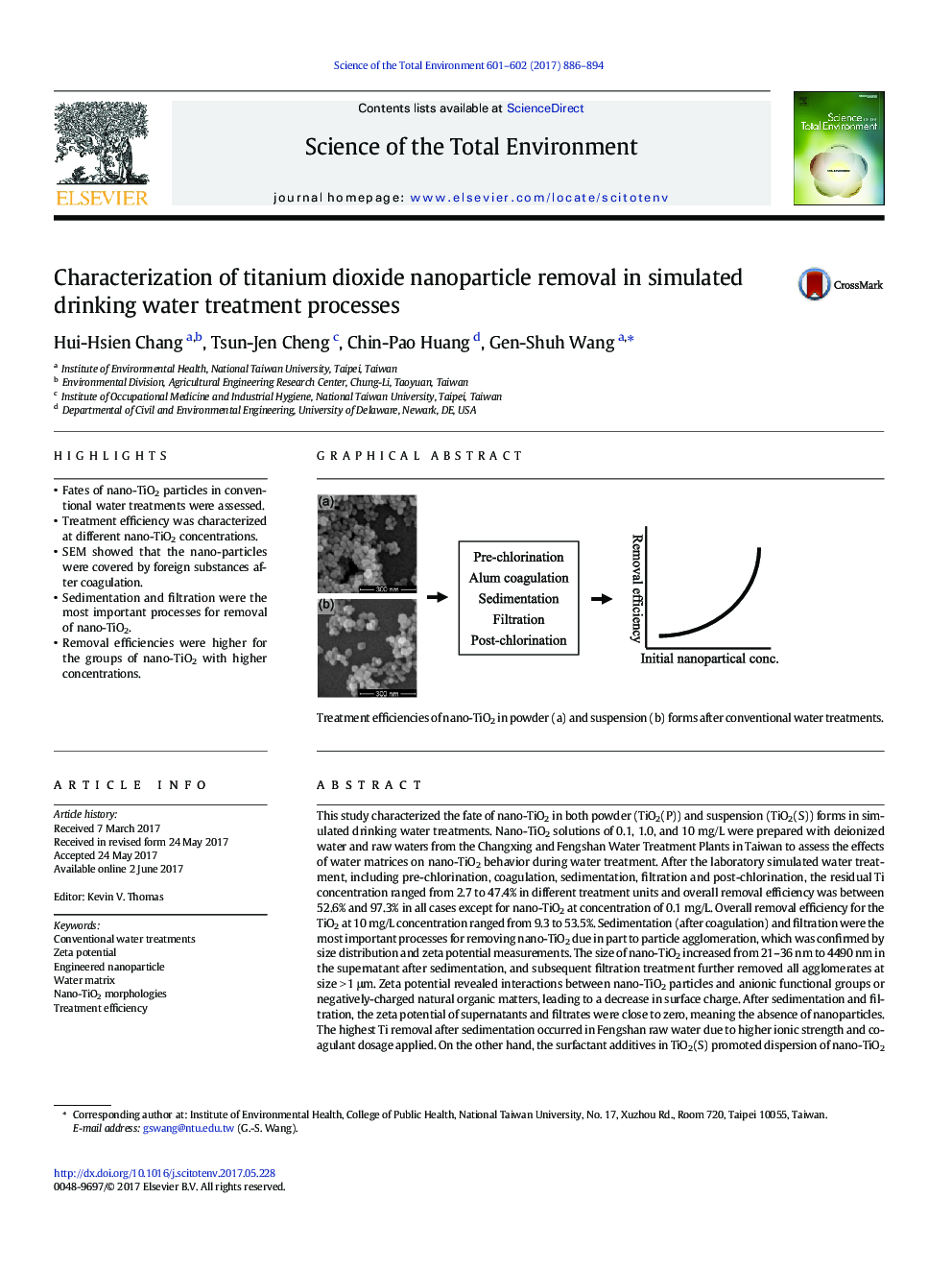| کد مقاله | کد نشریه | سال انتشار | مقاله انگلیسی | نسخه تمام متن |
|---|---|---|---|---|
| 5750444 | 1619697 | 2017 | 9 صفحه PDF | دانلود رایگان |
- Fates of nano-TiO2 particles in conventional water treatments were assessed.
- Treatment efficiency was characterized at different nano-TiO2 concentrations.
- SEM showed that the nano-particles were covered by foreign substances after coagulation.
- Sedimentation and filtration were the most important processes for removal of nano-TiO2.
- Removal efficiencies were higher for the groups of nano-TiO2 with higher concentrations.
This study characterized the fate of nano-TiO2 in both powder (TiO2(P)) and suspension (TiO2(S)) forms in simulated drinking water treatments. Nano-TiO2 solutions of 0.1, 1.0, and 10 mg/L were prepared with deionized water and raw waters from the Changxing and Fengshan Water Treatment Plants in Taiwan to assess the effects of water matrices on nano-TiO2 behavior during water treatment. After the laboratory simulated water treatment, including pre-chlorination, coagulation, sedimentation, filtration and post-chlorination, the residual Ti concentration ranged from 2.7 to 47.4% in different treatment units and overall removal efficiency was between 52.6% and 97.3% in all cases except for nano-TiO2 at concentration of 0.1 mg/L. Overall removal efficiency for the TiO2 at 10 mg/L concentration ranged from 9.3 to 53.5%. Sedimentation (after coagulation) and filtration were the most important processes for removing nano-TiO2 due in part to particle agglomeration, which was confirmed by size distribution and zeta potential measurements. The size of nano-TiO2 increased from 21-36 nm to 4490 nm in the supernatant after sedimentation, and subsequent filtration treatment further removed all agglomerates at size > 1 μm. Zeta potential revealed interactions between nano-TiO2 particles and anionic functional groups or negatively-charged natural organic matters, leading to a decrease in surface charge. After sedimentation and filtration, the zeta potential of supernatants and filtrates were close to zero, meaning the absence of nanoparticles. The highest Ti removal after sedimentation occurred in Fengshan raw water due to higher ionic strength and coagulant dosage applied. On the other hand, the surfactant additives in TiO2(S) promoted dispersion of nano-TiO2 particles, which in turn led to lower particle removal. SEM images of nanoparticles after chlorination or coagulation revealed the coverage of nano-TiO2 particles by viscous substances and formation of colloidal structures.
Treatment efficiencies of nano-TiO2 in powder (a) and suspension (b) forms after conventional water treatments.178
Journal: Science of The Total Environment - Volumes 601â602, 1 December 2017, Pages 886-894
